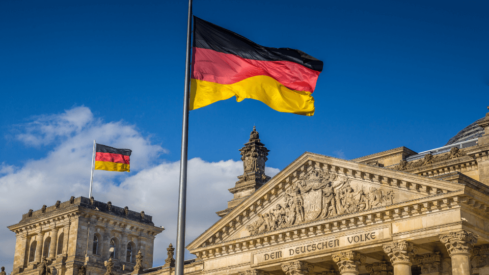German pet market: more turnover, but fewer pets

While the industry’s income increased by nearly 10% in 2022, mainly due to inflation, the animal population declined. Here are the details.
The German pet industry had a turnover of almost €6.5 billion ($7B) in 2022, a significant growth from 2021’s €6 billion ($6.5B) mark.
According to the German Pet Trade & Industry Association (ZZF) and the Industrial Association of Pet Care Producers (IVH), the income of the offline channel – pet stores and groceries – accounted for €5.1 billion ($5.59B), 7.1% more than in 2021.
Pet food registered the biggest growth (+9.5%) with €4 billion ($4.4B) sales last year. IVH Chairman Georg Müller said food sales remained largely stable and pointed out that the increase in this segment “is largely due to the current inflation.”
E-commerce represented €1.2 billion ($1.3B) against €1 billion in 2021.
Accessories sales declined by 0.9% and represented €1 billion ($1.28B) in 2022. Dog accessory sales plunged by 4.6%, followed by cats (-2.5%) and ornamental fish (-2.1%). However, sales of cat litter grow at 6.1%, accounting for a turnover of €324 million ($353M) last year.
Cat food makes the most of the market
According to the data, cat food dominated the pet food segment with a total turnover of €2 billion ($2.1B), a 12.5% increase from €1.7 billion ($1.85B) in 2021.
The wet food segment grew by 13.6% and overtook snacks for the first time in years, while the sale of dry food products jumped by 9.4% in 2022.
The dog food market marked a 7.8% increase offline and posted €1.8 billion ($1.9B) in 2022. Interestingly, wet dog food also trumped snacks in terms of growth and reached €595 million ($647.8M). Dry feed (+7.4%) and snacks (+3.6%) followed.
Offline sales of ornamental fish food witnessed a 5.2% growth at €59 million ($64M), according to IVH and ZZF. Ornamental bird feed remained stable with a €67 million ($73M) turnover. Small animal and wild bird feed sustained a loss of 7.1% and 2.5%, respectively.
300,000 fewer animals
The research concluded that in 2022 there were 34.4 million pets in Germany, mostly cats (15.2 million), dogs (10.6 million), small animals (4.9 million), and ornamental birds (3.7 million).
In a year, the number of pets in the country declined by 300,000. While the number of cats and dogs declined last year, small animals and bird populations increased.
It is believed that 46% of German households owned a pet in 2022, 1% less than in 2021. More than 2 out of 10 households have a cat (24%), followed by dogs (21%), small animals (5%), ornamental fish (4%), and ornamental birds (3%).
The data showed that the largest group of German pet owners (26%) are over 60 years old. Those aged 50 to 59 represent 21% of pet parents, followed by millennials aged 30 to 39 (19%).
